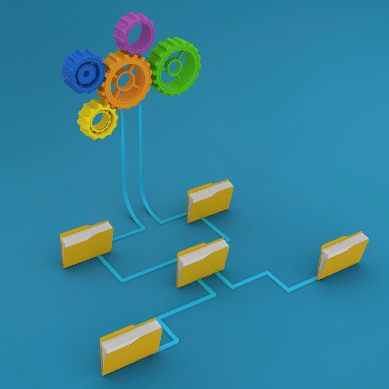What is a Risk Matrix?
A risk matrix is a tool used during the risk assessment stage of risk management. It identifies and captures the likelihood of risks and evaluates the potential damage caused by those risks.
A risk assessment grid provides a visual illustration of the risk analysis and neatly categorizes risks based on their level of probability and severity. A 5×5 risk assessment matrix is an effective way to get a clear understanding of risks.
Risk matrices come in different shapes and sizes. Choosing the appropriate matrix for risk assessment often results in heated debates between risk management professionals. 5×5 risk matrices can be used, as well as 4×4 and 3×3. The first step is to find a system that works best for your team. Remember that a smaller number of rows and columns provides less granularity.
How To Use a 5×5 Risk Matrix
When conducting a cyber risk assessment, you need to quantify the risk levels of various scenarios taking place. An organization must first define and identify its assets, then prioritize those assets, and only then conduct an assessment.
There are various tools an organization can use to conduct a risk assessment, which can also aid in quantifying and visualizing the data.
One of those tools is a 5×5 risk assessment matrix that produces a risk score through the combination of two parameters:
- The impact of this risk scenario taking place
- The probability and frequency of this risk scenario occurring
What is a RACM?
A risk and control matrix (RACM) is a useful tool that can assist a business in ranking risks and implementing controls to reduce those risks. A risk and control matrix is a graph of potential risks and the protective measures taken to lower those risks. Simply expressed, by comparing the risks to the official measures taken to lower the chance of negative outcomes, a RACM paints a picture of an organization’s risk profile.
Inherent risks are built-in risks just by the nature of how those assets function. Lowering those risks can be achieved by placing controls and safeguards in place to protect the organization from those risks materializing to their full capacity. The outcome of these actions will be a new score called residual risk.
The new residual risk score will be a function of how much we have lowered the impact and probability of that risk materializing, hence what is called control effectiveness. This control effectiveness acts as a weight and will impact how low the residual risk is.
Why Is a Risk Matrix Important?
All risks aren’t equal. A security risk assessment matrix allows you to prioritize the most severe risks your company faces. While it may be tempting to address every risk, resources are always limited. At the end of the day, every organization will need to take on some level of acceptable risk to succeed.
By categorizing degrees of risk according to a traffic light color scheme on a matrix, it’s easy to identify the most pressing threats and focus on them.
Start Getting Value With
Centraleyes for Free
See for yourself how the Centraleyes platform exceeds anything an old GRC
system does and eliminates the need for manual processes and spreadsheets
to give you immediate value and run a full risk assessment in less than 30 days
What is a Risk Assessment Matrix 5×5?
A 5×5 risk matrix contains 5 levels of probability and severity.
Likelihood
- Improbable (unlikely to occur)
- Remote (unlikely, though possible)
- Occasional (likely to occur occasionally during standard operations)
- Probable (not surprised, will occur in a given time)
- Frequent (likely to occur, to be expected)
Severity
- Negligible (the hazard will not result in serious injury or illness, or has a remote possibility of damage)
- Marginal (the hazard could cause illness, injury, or equipment damage but its effects would not be serious)
- Moderate (the hazard can result in serious injury or illness, property or equipment damage)
- Critical (the hazard can result in serious injury or illness, property or equipment damage)
- Catastrophic (the hazard is capable of causing death and illness)
What are the Benefits and Drawbacks of Using a 5×5 Risk Matrix?
A 5×5 format allows risk management teams to conduct risk assessments with the most detail and clarity.
Some contend that a 5×5 matrix is too complex and too much work to use for simple projects. Before starting a 5×5 risk assessment, it’s important to analyze if this level of granularity is necessary.
How Does Centraleyes Integrate a Risk Assessment Matrix?
Visualizing risk is not a simple task. This is why we’ve spent years developing the Centraleyes platform dashboards with state-of-the-art metrics. Data from risk assessments are fed into visually represented graphs and metrics that can be consumed by decision-makers to support smart business strategies.
Start Getting Value With
Centraleyes for Free
See for yourself how the Centraleyes platform exceeds anything an old GRC
system does and eliminates the need for manual processes and spreadsheets
to give you immediate value and run a full risk assessment in less than 30 days





